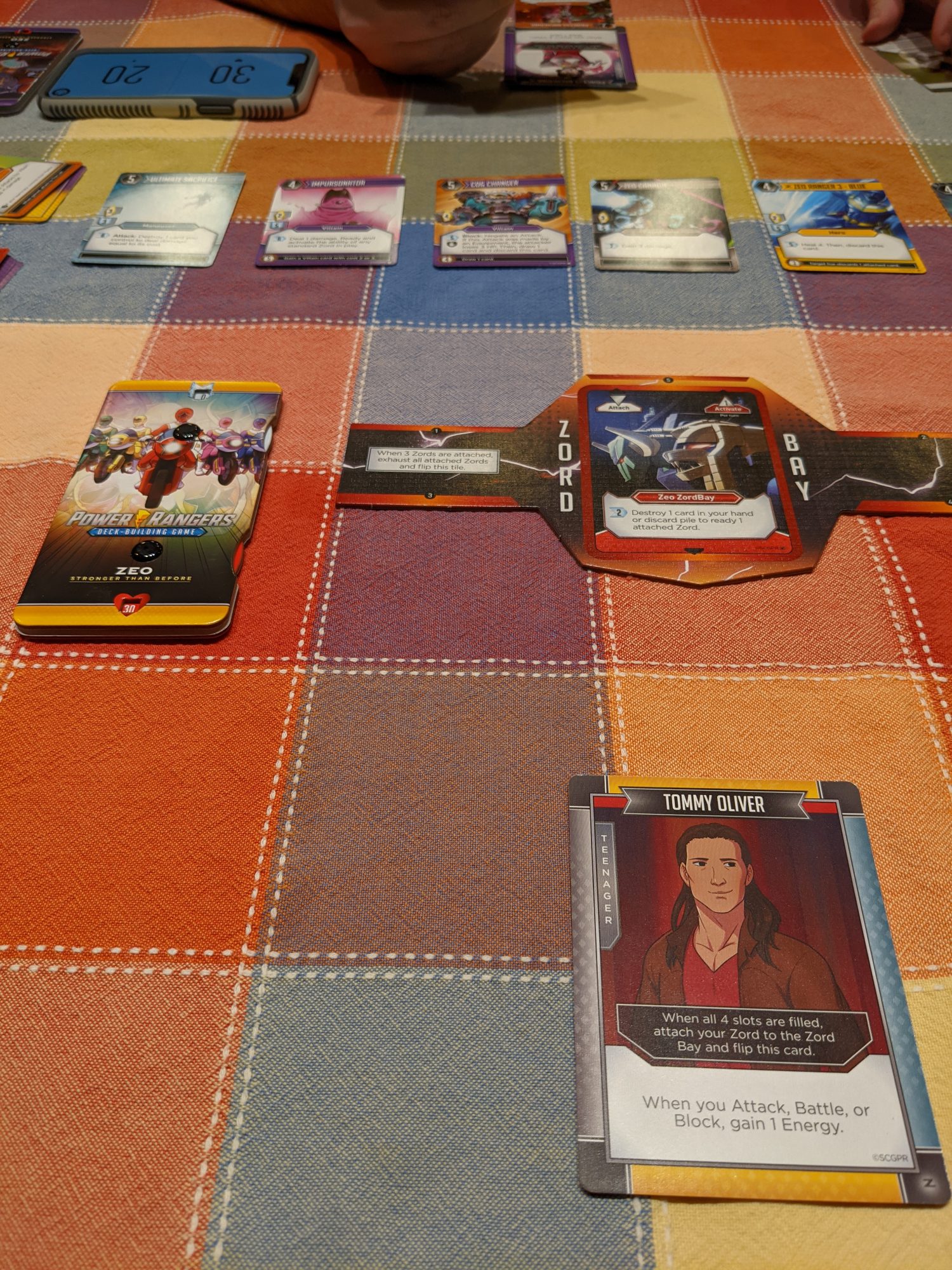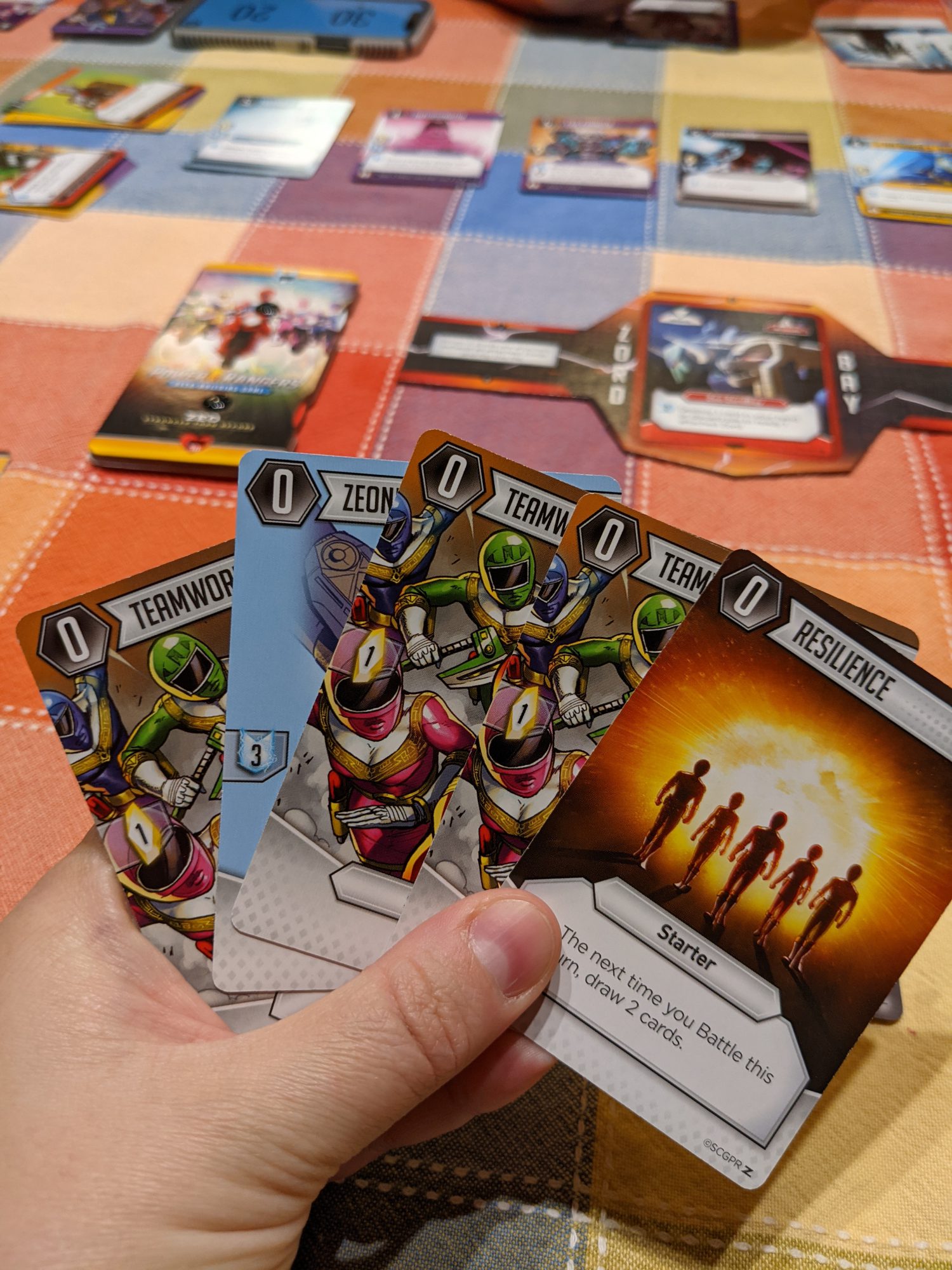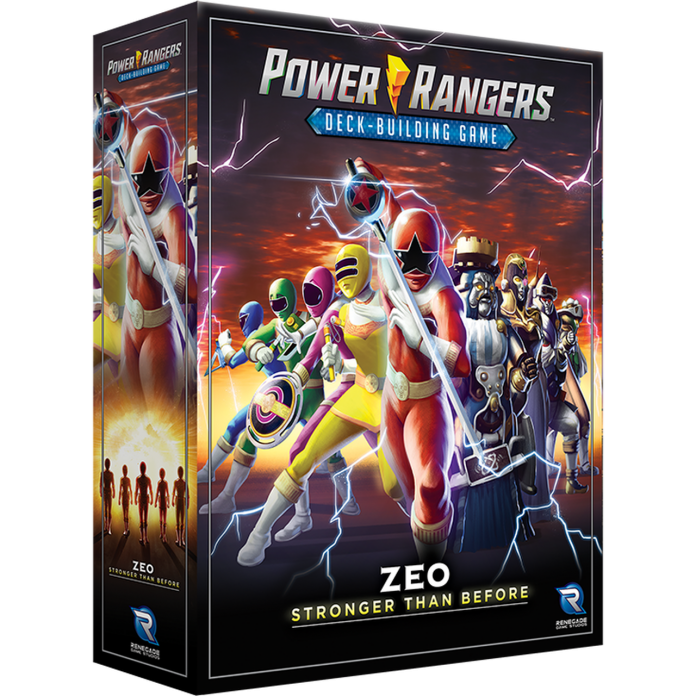I’m a millennial. And as a millennial, we are prone to endless purchases based on nostalgia. I thought I was above all of that until I saw the Power Rangers: Deck-Building Game – Zeo: Stronger Than Before. My inner eight-year-old screamed at me to play, despite outgrowing Power Rangers before its Zeo era. Luckily, the game doesn’t require you to know anything about the show outside of there being some good guys and some bad guys and they want to punch each other.
Power Rangers is played with sides: Heroes and Villains. It can be played with two or three players, but is very clearly intended to be a 4-player team-based 2v2 game. Though the team names differ, the gameplay and structure are almost identical. There is a center row consisting of different types of cards that both teams will use shards (the money-like currency in the game) to buy. Cards come in different colors that can be attached to the matching “slot” on your character card. Once you have attached cards to all four slots, your character flips and you get either a Zord for your ranger or the villain-equivalent Master card.

The center row also has Hero and Villain cards. Naturally, only the Power Rangers can buy Hero cards and Villains can buy Villain cards. However, the kicker with these two card types is that they will cause damage at the end of a turn if left in the center row. So, instead of using shards to buy cards, you can use them instead to battle a Hero/Villain and gain a reward. This creates an interesting tug-of-war in deciding how to use your shards each turn, debating between improving your deck or reducing outright damage. While bringing the other team’s health down to zero is the main goal of the game, this center row damage control becomes an additional consideration. It also means each team is motivated and keep the options in the center row churning.
The progression of the game culminates in a pretty standard deck-building PVP game experience: increase your resources and balance your deck while dealing damage to the other team. There are some other nuances – stuns, blocking attacks, and using energy (the other currency) to activate abilities – that add to the rules overhead. For the most part, these integrate well enough into the play, especially if you’re familiar with other games of this ilk. However, there is one more, pretty major, thing that ends up pulling it away from the straightforward design described above.

Throughout the game, each side tries to consolidate its strength into its thematic, yet clunky, ultimate end-of-the-episode attack. I mentioned the Rangers getting Zord cards and Villains getting Master cards. Once players get their own Zord or Master card, they can add to their power by obtaining others. So, yes, the red ranger can get their zord, but also the Green Ranger’s too. If you get them all, you can create the Megazord. Likewise with the Villain characters and Master cards who will eventually all gather into the Lair. These “big gun” type cards are clearly intended to culminate in a triumphant victory by overpowering your opponent(s). The problem is that it rarely happens.
It’s incredibly difficult to split your limited resources – both shards and energy – among adding cards to your deck, fighting Heroes/Villains in the center row, and acquiring your Zord/Master card (oh, and a special weapon card set aside at the beginning of the game, should you also want to buy that). It’s just too much. Instead of building towards something, you end up with competing goals, and not in a good tension kind of way. It’s an unnecessary carrot on a stick you will rarely, or ever, reach. Even though the health pools dwindle and energy creeps upward, ensuring the game won’t go on forever, it feels like you’re contending with your own deck more than your opponent’s choices. The cards never really coalesce. You don’t get big fun combos that snowball into these over-the-top moments of calling on your Zords and using their abilities to fight the equally overpowered Master cards. The integration of these iconic aspects of the IP is appreciated, but they unfortunately result in making the game sputter along, trapped under its superfluous when-this-then-that mechanics.

As the Rangers, it felt incredibly difficult to build up toward getting one Zord, let alone much more (even in a team game which makes the cost slightly cheaper to do so). You’d quickly feel overrun by the Villains who have more frontloaded damage. Though, when playing as the Villains, you’d also feel like it was an uphill battle to get anything going. Overall, the sides generally feel balanced and, likewise, the 1v1 and 2v2 versions of the game felt similar too.
There is a great deal of unique ideas in the game, but the road has so many bumps that it’s not worth the trip. The more I played it, trying to get a grasp on its pacing and structure, the less I wanted to. And though my nostalgia flame was quickly extinguished after playing this, I would love to see the design come back in a more refined way. How about we pull deep and do Big Bad Beetleborgs next, eh?


